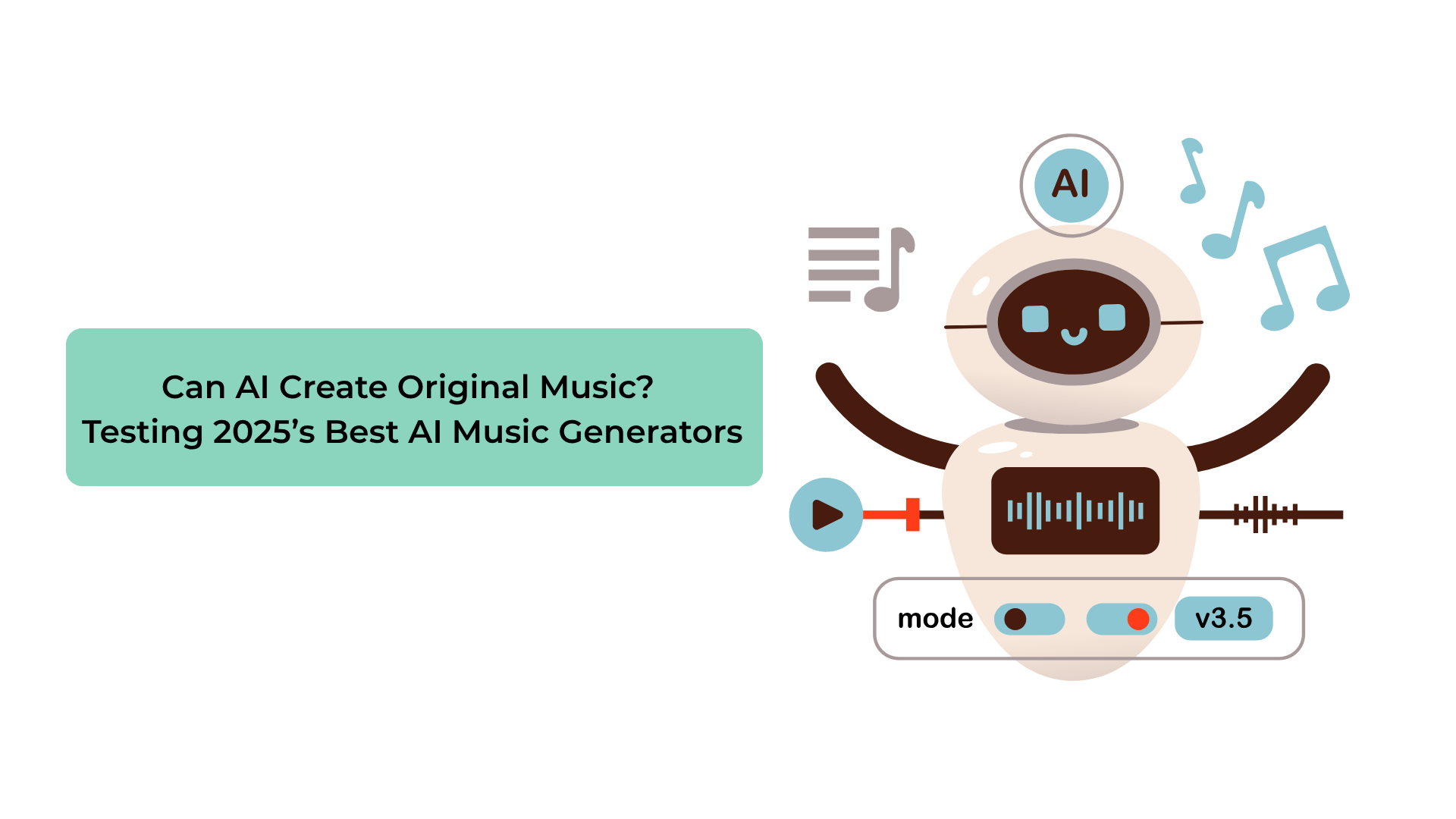In 2025, AI-generated music is no longer a novelty — it’s a serious tool for creators, marketers, and hobbyists. Tools like Suno, Udio, and Stable Audio are pushing the boundaries of what artificial intelligence can do in sound production, allowing users to create original tracks with a few lines of text or reference audio.
But how good are these platforms? Are they truly “original”? And where does copyright law fit into this fast-evolving landscape? We tested the top AI music generators of 2025 and broke down what you need to know.
1. Suno v3: Fast, Fun, and Viral-Ready
Suno has become the go-to for social creators looking to make catchy songs in seconds. With the latest v3 model, Suno now allows full songs with verses, choruses, and a much-improved understanding of style and structure.
Key Features:
- Text-to-song interface (no musical input required)
- Multiple genres are supported, from rap to folk to EDM.
- Can generate vocals and instrumentals in under a minute
- High focus on viral, short-form content
Pros:
- Simple interface for beginners
- Catchy results with minimal prompting
- Great for social media, jingles, or meme culture
Cons:
- Limited control over instrumentation
- Outputs are sometimes too generic for professional use.
2. Udio: Professional-Grade AI Music Creation
If Suno is made for speed and fun, Udio is for musicians and audio professionals. Udio enables multi-section music generation, dynamic control over lyrics, and richer sound layers.
Key Features:
- Sectional song building (verse, hook, bridge)
- Lyric input and customization
- Support for genre-blending and style mimicking
- Extended song duration (up to 3–4 minutes)
Pros:
- More polished output
- Semi-professional quality for demos, mood tracks
- Creative freedom with lyrics and structure
Cons:
- Longer generation time
- Some genres still feel underdeveloped.
3. Stable Audio 2.0: Instrumental Powerhouse
Built by Stability AI (creators of Stable Diffusion), Stable Audio is focused on instrumental music and ambient generation. It’s the best option for scoring, background tracks, or lo-fi production.
Key Features:
- Upload and condition music via audio prompts.
- High-quality stereo outputs
- Focus on royalty-free background tracks.
- Great for looping, film scoring, or ads
Pros:
- Best for instrumental tracks and ambient soundscapes
- Supports audio-to-audio variation
- Open-source friendly, with developer access
Cons:
- No vocals
- More advanced interface, less friendly to beginners
Which One Should You Use?
| Use Case | Best Platform |
|---|---|
| Quick social music / viral songs | Suno |
| Songwriting & demo production | Udio |
| Instrumental or ambient music | Stable Audio |
Copyright & Legal Concerns in 2025
One of the biggest questions around AI-generated music is: Who owns it?
- Ownership: Most platforms like Suno and Udio allow users to retain rights for personal and commercial use, but the licenses often prohibit the redistribution of the model-generated voice or style.
- Training data controversies: Critics argue that AI models are trained on copyrighted works without artists’ consent, raising questions about fair use.
- Legal gray areas: In most countries, AI-generated works (with no human authorship) don’t qualify for traditional copyright. However, the human who provides the prompt may claim derivative rights.
In 2025, regulators are still playing catch-up. Users should always read licensing terms carefully, especially for commercial releases.
Final Thoughts
AI music generation in 2025 is not just experimental; it is introduction-ready for specific use cases. Whether you’re a marketer, musician, content creator, or just curious, these tools offer a new world of sound generation.
But as the tech evolves, the line between human creativity and machine mimicry continues to blur. The question is no longer “Can AI make music?” It’s “Will we use it?”

